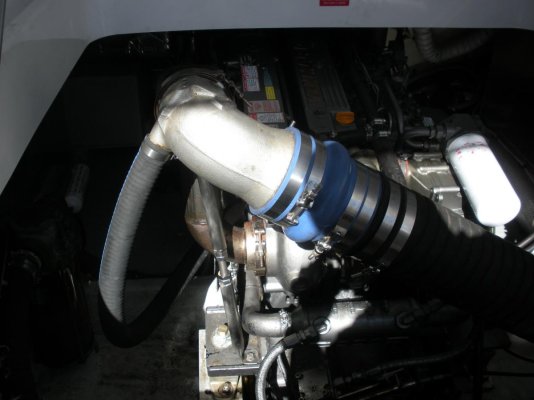EVELYN B
Member
I am having my fuel tanks on a GB42 replaced and the worker assigned to the removal punctured the exhaust hose with the tip of the Sawzall blade. It's just a small wound and I'm not sure if the hole is thru the hose. The hose is directly behind the tank and I don't ever want to have to remove the tank for a re-repair. Any suggestions on a foolproof repair technique.

